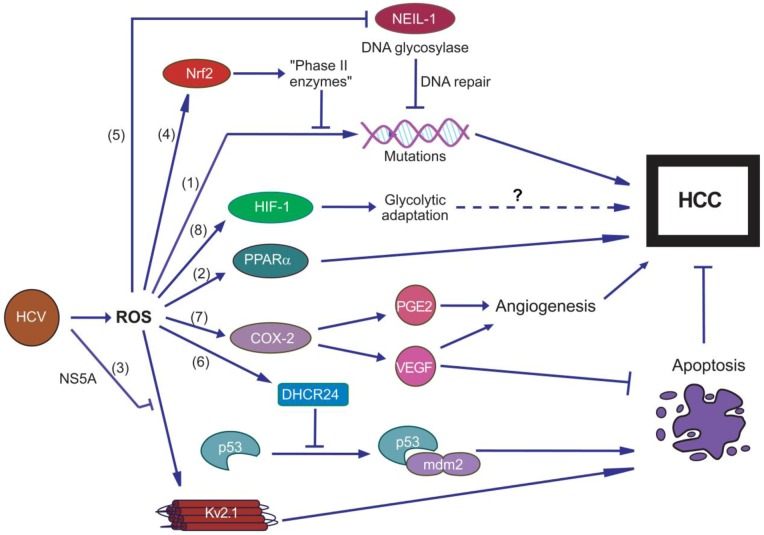Figure 2.
Diagram representing possible mechanisms linking HCV-induced oxidative stress with hepatocarcinogenesis. They include accumulation of DNA damage in response to ROS augmented by suppressed reparation processes (down-regulation of NEIL-1 DNA glycosylase) with concomitant activation of antiapoptotic Nrf2/ARE antioxidant defense pathway. HCV-induced oxidative stress also favors tumor development by enhancing HIF-1—driven glucose uptake and glycolytic adaptation, regulated by hypoxia-inducible factor 1 (HIF-1) as well as by promoting angiogenesis through activation of cyclooxigenase 2 (COX-2) which caused enhanced biosynthesis of prostaglandin E2 (PGE2) and vascular endothelial growth factor (VEGF). In addition, ROS-mediated activation of peroxisome proliferator-activated receptor α (PPARα) as well as blockage by NS5A of proapoptotic potassium ion channel Kv2.1 may also contribute to carcinogenesis.

